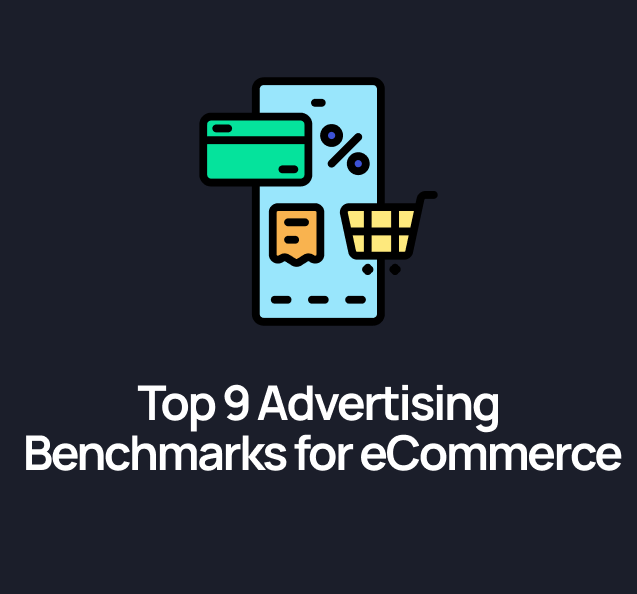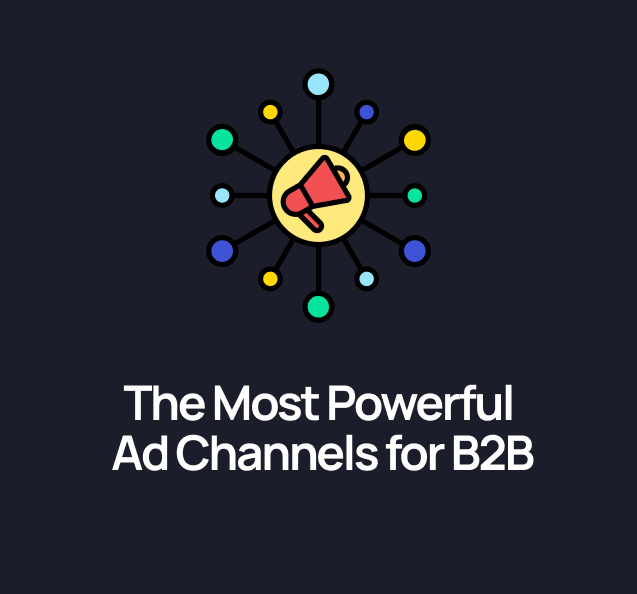In this article, we’ll walk through the history of Notion, its marketing strategies, and how they’ve arrived at household name status. Let’s dig into how they did it.
The origin story
In 2013, Ivan Zhao was a college student who taught himself how to code. He noticed his friends wanted to express themselves on the Internet using WordPress and social media, but without the ability to code, it was hard for people to build on the Internet. He wanted to change that. In many ways, he foresaw the no-code movement years before it took off. That year, he met Simon Last, his new best friend and co-builder of Notion.

They failed and had to start over
Over the next few years, Ivan and Simon built the first version of Notion with four other employees and even raised some capital. But the app had too many bugs and not enough users. The capital dried up and they had to let go of their four employees.
From San Fran to Kyoto
From there, Ivan and Simon shut down their San Francisco office and moved to Kyoto Japan where their living expenses were significantly lower. They worked around the clock on designing a new app. They completely rebuilt the code and product design from scratch. It was during this time that Notion 1.0 started to take off.
Marketing overview
Before we dive into their step-by-step strategy, let’s first see how they’re acquiring traffic today:

The vast majority of their traffic is direct - we’ll share why this is.
The second highest traffic source comes from their content marketing strategy which we’ll also outline below.
With this info in mind, let’s dive into how they’ve grown step-by-step:
Community-led growth
In its early days, Notion had a referral program where users earned credits for each referral. They’ve since expanded their community-led growth in many clever ways:
- Individuals can use Notion, but it’s mostly used by small businesses and even large corporations (like Spotify!) which means that organizations are inviting dozens if not thousands of new users.
- Notion has also replaced popular collaborative apps like Google Docs, which means as people share Notion pages, more people are aware of the product.
- Notion has also leaned into this community environment using templates. Users can build and share their own templates, and even monetize them.
- Later, Notion launched Notion Consulting Partners where organizations can hire certified consultants to improve their workflows. This means Notion enthusiasts can get certified and start making money as a Consulting Partner with the brand.
- They also launched Notion Ambassadors for passionate enthusiasts who teach and share Notion within their communities. Ambassadors get early product releases, a private Slack group, and sessions with Notion team members.
We also want to note that doing large brand campaigns with a referral program can greatly reduce the overall acquisition cost per user. This is one reason why their community-led growth has been great at driving down their marketing costs.
They’re essentially using their own customers as brand advocates. Their CRO said, “Community is a force that should power every stage of the funnel.”
This partially explains why their direct traffic numbers are so high; people hear about Notion and then head there directly, or they are invited to collaborate. As we’ll see later in the article, they also have high direct traffic due to their out-of-home marketing campaigns.
They think of their users as self-sustaining with community forums, customer support, video tutorials, etc. Because of this, they’re able to keep their team relatively small. Currently, Notion has ~400 employees whereas Asana has closer to 1,800.
App replacement
Notion is appealing because users can replace many apps with it, like Evernote, Wiki, Airtable, and Trello. That’s why they call it the all-in-one productivity app. As they built the app, this was strategically kept in mind. It’s been a big part of their messaging and mass appeal.
Design and branding
The founders describe Notion’s voice and design as “cool, calm, and collected.” They said this is “the perfect blend you’d expect from what started as a lifestyle management tool.”

The simple design was another lever that helped them grow quickly. Of course, people are more apt to share beautifully designed and easy-to-use products.
Less growth pressure: quality over quantity
The Notion founders mentioned in a few interviews that they focused on the “quality of their content and making it a platform a smaller audience loved.”
Instead of getting distracted by scale, they narrowed their focus to building a group of devoted fans. Ironically, this shift in focus is likely what allowed them to grow to huge numbers and even surpass their goals.
Content marketing
It might seem like Notion grew effortlessly, but it wasn’t without some marketing headaches.
One challenge they faced was the wide variety in their audience. They serve individuals, small business owners, and large corporations. How do you write content that appeals to everyone?
Their answer: audience segmentation.
They created customer profiles and drafted a content strategy for every user type.
Blurring the lines between marketing content and educational content
Almost every single Notion blog features the product. It’s hard not to discuss their educational topics without showing how their product helps. Here’s an example.
They also have an Inspiration section of their blog where users can highlight how they used Notion to achieve success. This gives the brand social proof and free content.
And last, their content team has a dedicated team of designers and engineers to help them. This makes their content team much more powerful as they’re able to build, design, and iterate faster. Not every company gives their content team the budget for designers and engineers, so this investment shows us how much they value content in their marketing mix.
Marketing budget: heavy advertising
Another reason why Notion gets such high “Direct” traffic labeled is their out-of-home marketing. According to Digiday, half of Notion’s media mix is dedicated to demand generation and awareness, including out-of-home marketing and streaming video. The other half is dedicated to a more targeted, digital mix like paid social, ppc strategy, and content. Their budget in 2022 was over $7 million, which was nearly double their 2021 budget of $3.8 million.
Out-of-home marketing (OOH)
In August 2022, they invested in their first international billboard campaign across eight cities: San Francisco, New York, Toronto, London, Dublin, Paris, Tokyo and Seoul.
Their out-of-home marketing is an awareness play and accounts for half of their marketing budget. That is a significant portion of their budget to spend on only awareness.
This likely means that awareness is the most powerful “domino” in their marketing funnel. Once someone is aware, the other dominos, including conversion, are likely falling fast from there.
This type of marketing is a good fit for companies like Notion where the product has many use cases, both personal and business. For example, it can be used by developers to track product changes, but it can also be used by couples to plan a wedding. OOH marketing combined with paid ads (which we’ll talk about below) allows a brand to take over a particular city in an efficient way. It fosters word of mouth and curiosity for the product.
Paid ads

Notion also invests in paid ads, although most information reporting on their marketing notes that Notion isn’t investing in paid ads as much as typical SaaS marketing teams do.
UX Planet wrote, “A key differentiator to their strategy is how they grow horizontally by marketing to a large base of people, segmenting their audiences, and leaning heavily into their flexibility, and the power of community.”
Similar to their blog content, their image and video ads rely heavily on product imagery. They simply show and discuss the product itself. We noticed a few interesting styles that work well for them:
- Testimonial-style ads where a customer (usually a business owner) discusses how they run their business using Notion. Here’s a second example of this type of ad.
- Video ads that showcase the product with a voice-over of someone more authoritative explaining the product
- Video ads that showcase the product with a voice-over of a customer and their thought process while using the product
It’s clear they’re using their ads to showcase the product itself and they use their paid ad strategy to further their community strategy with testimonial-style ads, as well.
Social media

Notion has had the most success on YouTube (both paid and organic) because they’re able to take more time to explain and show the product in a video format.
Alex Hao, the social media manager at Notion, said Notion is all about slow growth on social media.
She said, “Slow, sustainable growth isn’t necessarily an outright rejection of trends. We do jump on trends, just not at the expense of our long-term commitments. You can move fast and grow sustainably at the same time.”
Her idea of slow growth is ensuring their long-term goals are embedded into every social post.
Here are the long-term goals she outlined:
- Making Notion a better product based on user feedback
- Strengthening our global community’s connections to each other
- Extending brand awareness to new audiences, and educating on the value Notion can bring
In terms of improving Notion, Hao said they’ll take suggestions from users on social media, build a feature, and then tag that person on social media even up to a year later.
This level of thoughtfulness allows them to move fast and jump on trends, but also constantly re-align everything they create to a bigger purpose.
So how did Notion become a household name over the last 8 years?
The most interesting marketing lever that Notion uses is its community-led growth. Their household name status likely wouldn’t have happened without their template features, ability to collaborate in docs, and motivated fan base. The lesson we can all learn here is how to turn our own customers into brand advocates. The only way to do that is to deliver value. Notion did this with its product design, brand voice, and by helping customers replace several apps with just their own app. They focused on building a small group of loyal fans before they ever set their sights on becoming a household name. From there, their customers took over and it spread like wildfire.
They’ve also invested in content, paid ads, social media, and out-of-home marketing–and they always align these goals to the long-term. Their choice to invest in large OOH advertising, instead of just solely digital paid ads, shows that they’re interested in building brand awareness over the long term. They can afford this type of strategy because their product has so many use cases.
By focusing on the long-term, Notion has ironically sped up its growth. This tells us a lot about the market and what it values: depth, community, perspective, and voice. Notion has given the creative community a space that is dedicated to them and all their creative needs.
Not every company aspires to become a household name, but we all want our marketing to be effortless. That’s where we come in…
Looking to acquire more customers?
The best time to acquire a new customer is when they’re looking for a solution to their problem. We're the SaaS ppc agency that helps brands do exactly that with ppc strategy. We help our clients do just that and we've helped them scale revenue by 30x. Fill out this quick form and we’ll be in touch with how we can help.

.svg)








.svg)
